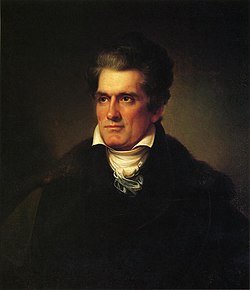Top Qs
Timeline
Chat
Perspective
Taylor Square (Savannah, Georgia)
Public square in Savannah, Georgia From Wikipedia, the free encyclopedia
Remove ads
Taylor Square, formerly known as Calhoun Square, is one of the 22 squares of Savannah, Georgia, United States. Laid out in 1851 south of Lafayette Square, west of Whitefield Square, and east of Monterey Square, it is named in honor of Susie King Taylor, an educator, memoirist, and the first Black nurse to serve in the American Civil War.[1]
The oldest buildings on the square, the Adam Short Property and the Alexander Bennett House (both on East Taylor Street), date to 1853.[2] The square is sometimes informally called Massie Square due to the presence of Massie Common School House, which was built in 1855 and lies just outside.[3] The Wesley Monumental United Methodist Church, founded in 1868, is located directly across the street from the square's western side.
Remove ads
Name
The square had previously been used as a "negro burial ground"; in 1855, the bodies of enslaved residents Emily and Rinah were removed to Laurel Grove Cemetery.[4] In 2004, a skull was found by utility workers outside the Massie Heritage Interpretation Center on the square's southeastern side.[5]
This legacy prompted a 2021 movement to rename the square after the Sankofa bird, a Ghanaian symbol expressing the "importance of knowing one's history."[6] City councilors voted unanimously on November 10, 2022, to remove Calhoun's name from the square.[7]
In August 2023, after discussion and debate, the Savannah City Council settled on a new name, Taylor Square.[8] The council approved the installation of a new granite marker, which will note that the square that was once named for John C. Calhoun (Calhoun Square) is now named for Susie King Taylor (Taylor Square).[9]
Remove ads
Dedication
Remove ads
Constituent buildings
Summarize
Perspective
Each building below is in one of the eight blocks around the square composed of four residential "tything" blocks and four civic ("trust") blocks, now known as the Oglethorpe Plan. They are listed with construction years where known.
- Northwestern residential/tything block
- Mary Demere House, also known as The House on Taylor, 128 East Taylor Street (1860)[2] – bay windows added 1894
- Mary Demere (Estate of) House, 126 East Taylor Street (1872)[2]
- Adam Short Property, 118–122 East Taylor Street (1853)[2] – joint-oldest building on the square
- 108–114 East Taylor Street (1873)[2]
- John Kuck House, 106 East Taylor Street (1906)[2]
- Alexander Bennett House, 102 East Taylor Street (1853)[2] – joint-oldest building on the square
- Northwestern trust/civic block
- Sara Clark House, 421 Abercorn Street (1859)[2] – additional level added in 1894
- Southwestern trust/civic block
- Wesley Monumental United Methodist Church, 429 Abercorn Street (1875)[12]
- Southwestern residential/tything block
- Northeastern residential/tything block
- William Rogers House, 202 East Taylor Street (1859)[2]
- George Ash Row House (1), 206–210 East Taylor Street (1855)[2]
- Andrew Hanley House, 214 East Taylor Street (1883)[2]
- George Ash & Francis Grimball Duplex, 216–218 East Taylor Street (1854)[2]
- George Ash Row House (2), 220–224 East Taylor Street (1869)[2]
- Northeastern trust/civic block
- Easton Yonge House, 426 Abercorn Street (1855)[2] – by George Ash; side porch added 1909
- Southeastern trust/civic block
- Southeastern residential/tything block
Remove ads
Gallery
- Calhoun Square (formerly named after John C. Calhoun)
- Wesley Monumental United Methodist Church (UMC)
- The square's unique clumps of grass, looking southwest towards the UMC
- Looking east towards 432 Abercorn Street
- Easton Yonge House, 426 Abercorn Street
- 430–432 Abercorn Street
- William Rogers House, 202 East Taylor Street
- George Ash Row House (1), 206–210 East Taylor Street
- Andrew Hanley House, 214 East Taylor Street
- George Ash & Francis Grimball Duplex, 216–218 East Taylor Street
- George Ash Row House (2), 220–224 East Taylor Street
- Charles Hutchins House, 113 East Gordon Street
- Adolphus Gomm House, 115 East Gordon Street
- John B. Berry House, 127 East Gordon Street
- Sara Clark House, 421 Abercorn Street
- Edward Purse Duplex, 220–222 East Gordon Street
- John Guerrard Row House, 215–229 East Gordon Street
- Massie Common School House, 201–213 East Gordon Street
- Lengre Building, 233 East Gordon Street
- Flora Max House, 235 East Gordon Street
- Thomas Davis House, 237 East Gordon Street
- Alexander Bennett House, 102 East Taylor Street
- Another view of 102 East Taylor Street
- John Kuck House, 106 East Taylor Street
- Adam Short Property, 118–120 East Taylor Street
- Mary Demere (Estate of) House, 126 East Taylor Street
- Mary Demere House, 128 East Taylor Street
Remove ads
References
Wikiwand - on
Seamless Wikipedia browsing. On steroids.
Remove ads































